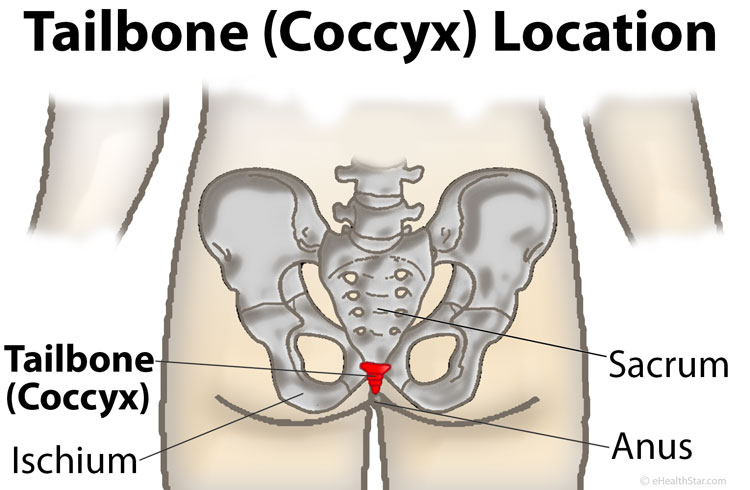Tailbone Injury Overview
A coccyx injury results in pain and discomfort in the tailbone area (the condition is called coccydynia). These injuries may result in a bruise, dislocation, or fracture (break) of the coccyx. Although they may be slow to heal, the majority of coccyx injuries can be managed with cautious treatment.
The coccyx is the triangular bony structure located at the bottom of the vertebral column. It is composed of three to five bony segments held in place by joints and ligaments.
The majority of coccyx injuries occur in women, because the female pelvis is broader and the coccyx is more exposed.
Tailbone Injury Causes
Most tailbone injuries are caused by trauma to the coccyx area.
- A fall onto the tailbone in the seated position, usually against a hard surface, is the most common cause of coccyx injuries.
- A direct blow to the tailbone, such as those that occur during contact sports, can injure the coccyx.
- The coccyx can be injured or fractured during childbirth.
- Repetitive straining or friction against the coccyx (as happens in bicycling or rowing) can injure the coccyx.
- Sometimes, the cause of coccyx injuries is unknown.
- Less common causes of coccyx injuries include bone spurs, compression of nerve roots, injuries to other parts of the spine, local infections, and tumors.’

Tailbone Injury Symptoms
- Severe localized pain and tenderness may be felt in the tailbone area.
- If the injury is traumatic, a bruise may be visible in this area.
- The pain is generally worse when sitting for prolonged periods of time, or with direct pressure to the tailbone area.
- Bowel movements and straining are often painful.
- Some women may experience pain during sexual intercourse.
Medical Treatment
In addition to home care, a doctor may be able to provide further relief of pain with other medical and, rarely, surgical interventions.
- Stronger pain medicationsmay be prescribed at the discretion of your doctor.
- Stool softeners may be prescribed to prevent constipation.
- Injections of local anesthetics into the tailbone are sometimes required for continuing pain.
- Rarely, the coccyx may be surgically removed.
Follow-up After a Tailbone Injury
Follow-up is recommended at the discretion of your doctor and depends on the severity of the injury and the progress you are making with medical treatment.
- Most people do not require follow-up if their coccyx injury is improving with medical treatment.
- People with chronic tailbone pain, for whom medical therapy has not worked, require more frequent follow-up and may be referred to other medical or surgical specialists.
- Most tailbone injuries are accidental (such as a slip on ice) and therefore cannot be entirely avoided.
- Wear proper protective padding when participating in contact sports that can potentially lead to coccyx injuries.

Post a comment